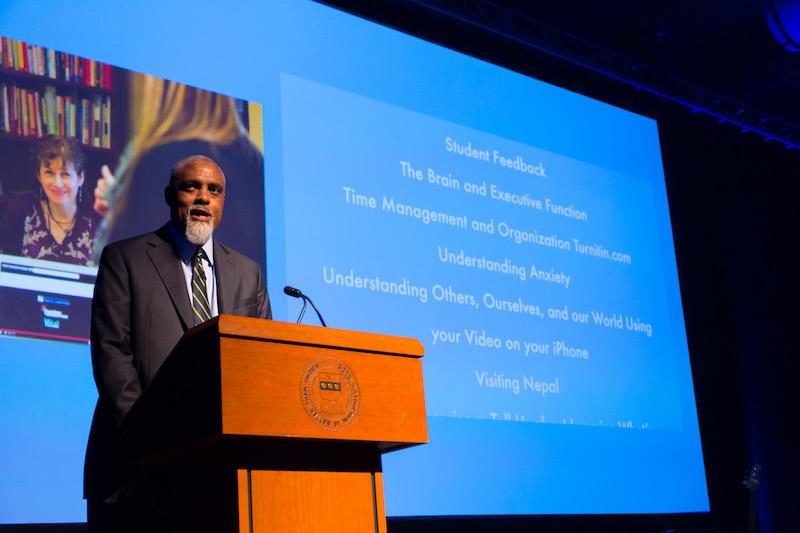We’ve already covered Public Speaking Tips and Tips for Appearing on Camera & Video, but what happens when it’s time to create a slideshow presentation? We’ve compiled 12 of our best tips for making a good one. Read below!
- Make sure you know the aspect ratio of the screen you’ll be presenting on, so you can design your presentation in the same size and ratio. This will ensure there are no unsightly black bars on the top/bottom or sides when it’s time to present.
- Keep text to a minimum. All too often we see slides filled with text in paragraphs and lengthy bullet points. Instead, focus on listing just key points, and filling in the gaps with your narrative contribution to the presentation.
- Don’t overwhelm your audience with too much content at once. If you put a paragraph or 10 lines of text on the screen all at once, especially if you’re talking while you advance slides, it makes it difficult for the audience to follow along. They aren’t sure whether to listen to what you’re saying or if they should quickly take notes before the slide advances and they miss everything. Only display the information that you’re talking about in that moment. Nothing more.
- White space is your friend. Have you ever received a document or resume or anything else that just had way too much written on it? Like, so much that you just didn’t even bother reading it at all? That same principle applies here. Don’t try to cram 10lbs of content into a 5lb bag. If it takes 8 slides for you to get your info across, that’s fine!
- But, if possible, keep the entire presentation short, so your audience doesn’t get bored. There’s no good rule-of-thumb for a number of slides to stay within, since that’s largely dependent on the content you are delivering on, but keep it as short as possible.
- Good design can make or break your presentation; however, good design does not have to mean visually complex. Use colors that make sense for your presentation (match your company’s colors, or if you’re delivering a presentation about springtime, consider using colors that match the topic) while keeping in mind how the colors may affect the text and photos in your slideshow. High contrast is always best for allowing your audience to see what you wrote. Just because it looks good to you on your computer doesn’t mean it will be effective in the real scenario. It’s always a good idea to test it on a larger screen so you can get a better idea of how it will look the day-of.
- Know your presentation like the back of your hand. Memorize each slide, or at least the order. Make notes in the app’s built-in functionality for it, or at least write notes on paper that you can reference. This will help prevent you from looking at the main screen as if you have no idea what your presentation is about, and turning your back to the audience.
- Please, no special effects unless necessary. It’s not whimsical, it’s not fun, it’s distracting and unprofessional, and takes away from the real message that you want to convey.
- Do not assume your knowledge and expertise on the subject matter parallels that of your audience. Slow down the presentation and allow everyone to understand the point you’re making before moving on to the next one. Ask questions along the way to make sure your audience is following along at the right pace.
- Remember, the content on the slides isn’t for you, it’s for your audience. Cater the content to those people, and have a good understanding of their overall knowledge level before you create the slideshow.
- Get comfortable with advancing (and reversing) your slideshow, in the same method you’ll use during your real presentation. People will inevitably ask you to go back to the last slide, and you don’t want to fumble through such a simple request. It should be as seamless as advancing a slide forward. If you’re using a handheld slide advancer, memorize the functionality of the device by feel, so you do not even have to look at the device to change slides.
- Practice, practice, practice, and when you think you’ve practiced enough, practice 3 more times. If you have the opportunity to, practice in front of people, too, and ask for feedback.


 May 11, 2018
May 11, 2018  Synergetic
Synergetic  Corporate Events
Corporate Events  July 26, 2024
July 26, 2024  Synergetic
Synergetic  Uncategorized
Uncategorized